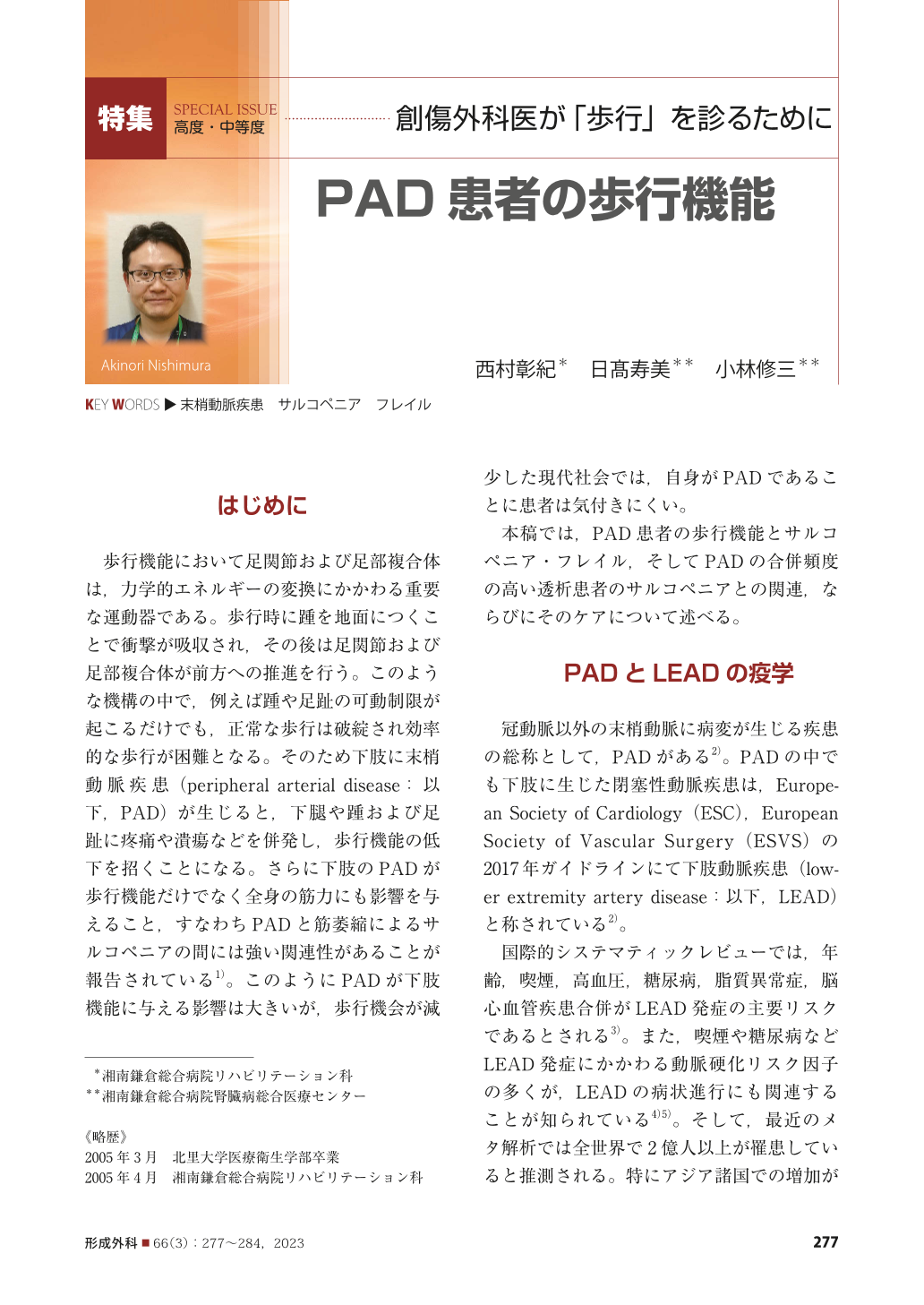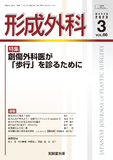Japanese
English
- 有料閲覧
- Abstract 文献概要
- 1ページ目 Look Inside
- 参考文献 Reference
- サイト内被引用 Cited by
はじめに
歩行機能において足関節および足部複合体は,力学的エネルギーの変換にかかわる重要な運動器である。歩行時に踵を地面につくことで衝撃が吸収され,その後は足関節および足部複合体が前方への推進を行う。このような機構の中で,例えば踵や足趾の可動制限が起こるだけでも,正常な歩行は破綻され効率的な歩行が困難となる。そのため下肢に末梢動脈疾患(peripheral arterial disease:以下,PAD)が生じると,下腿や踵および足趾に疼痛や潰瘍などを併発し,歩行機能の低下を招くことになる。さらに下肢のPADが歩行機能だけでなく全身の筋力にも影響を与えること,すなわちPADと筋萎縮によるサルコペニアの間には強い関連性があることが報告されている 1)。このようにPADが下肢機能に与える影響は大きいが,歩行機会が減少した現代社会では,自身がPADであることに患者は気付きにくい。
本稿では,PAD患者の歩行機能とサルコペニア・フレイル,そしてPADの合併頻度の高い透析患者のサルコペニアとの関連,ならびにそのケアについて述べる。
When peripheral arterial disease (PAD) occurs in a lower limb, the pain and ulcers in the lower legs, heels, and toes lead to a decrease in walking function. It was also recently reported that PAD of the lower limbs not only reduces walking function; it can also affect the muscle strength of the whole body. PAD has a large impact on lower-limb function, but in modern society where walking opportunities have decreased, it is more likely that individuals do no notice that they have PAD. The number of patients with PAD and lower-extremity artery disease (LEAD) is increasing in Japan as well as other countries. The decrease in the physical function of patients with LEAD is affected not only by aging but also by the LEAD itself, as LEAD is related to sarcopenia, which reduces an individual’s activity level. When a person is unable to walk, it also affects his or her activities of daily living, which may lead to a state of flailing. To break this vicious cycle, we believe that encouraging patients to engage in a regular walking habit will lead to the early detection of LEAD, and will also improve the symptoms of LEAD.

Copyright© 2023 KOKUSEIDO CO., LTD. All Rights Reserved.


